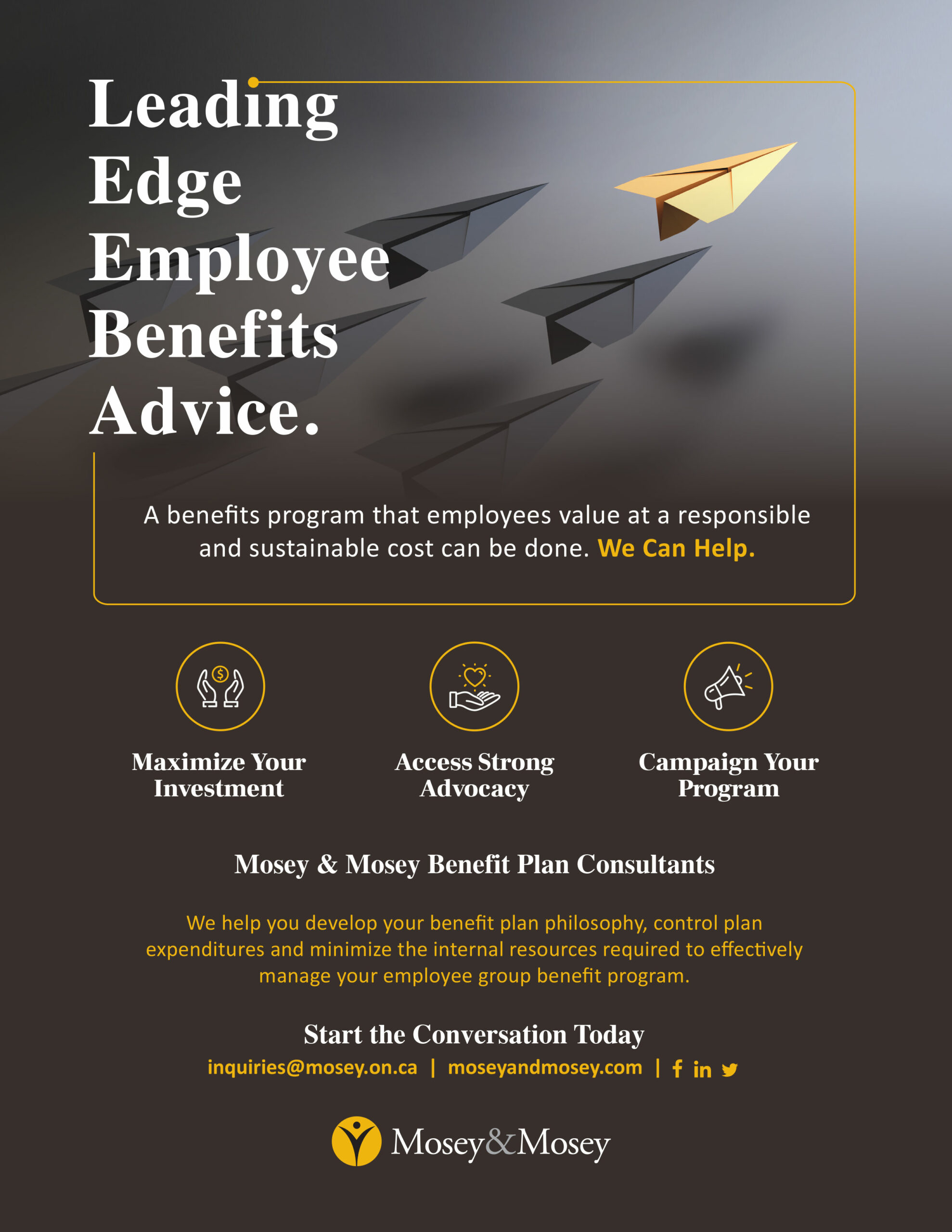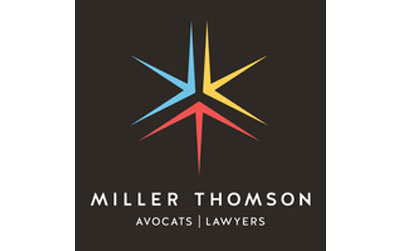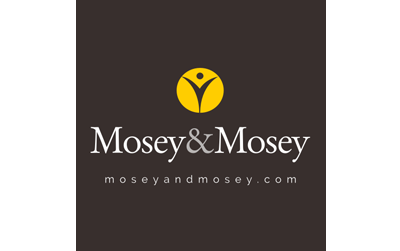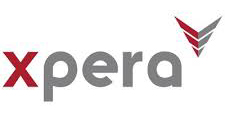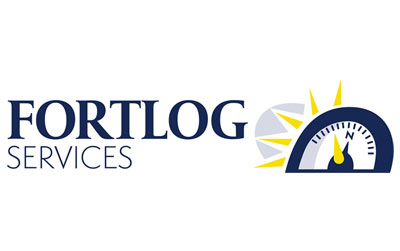
Issue #3 – May 2023
HR Navigator is published the last Friday of each month

This month we are focusing on the topic of wellness. While “wellness” has become a bit of a buzzword, according to the Oxford English Dictionary, the use of the word in the English language actually dates back to the 1650s.
The original definition – meaning the opposite of illness, or the stage of being well or in good health – relates to physical wellness. However, recently the term has evolved to cover much more than just our physical health, as this month’s newsletter contributors point out. Their articles help us to consider the many elements of wellness, and how we can foster wellness in ourselves and others to achieve wellbeing both individually, and organizationally.
From a personal perspective, I welcome Spring’s arrival because it allows me to once again get outside and move my body every day, even in some small way. I know that my wellness is greatly influenced by being physical and being outdoors, and that doing so contributes to both my physical AND emotional wellness. When I work-out I am transported to a different place and my anxieties and worries disappear – even for a short period of time.
I ran my first 10K on May 6th and am proud to say that I won first place in my age category (it helps being over 50!). The whole 10K was a struggle, and I just wanted to finish (not realizing that I was actually running a good pace). Little wins such as these boost confidence, support wellness, and become a virtuous circle.
From OMHRA’s perspective, two recent initiatives will no doubt contribute to the continued wellness of our organization and its members: the new Members Directory and the call for applications for our Board of Directors.
As part of our 60th Anniversary celebrations where we are introducing one new product or service each month, we have created a Members Directory accessible through the Members Lounge. OMHRA members can use the directory to find, connect, network and collaborate with fellow municipal Human Resource professionals. I hope you will find the opportunity to exchange ideas, build community, and seek the advice of HR colleagues in other jurisdictions to be invaluable.
To access the directory, click “Directory” in the task bar on the landing page of the Members Lounge to search for contact information for your peers across Ontario and tailor an on-line community to support you in your day-to-day activities as a municipal Human Resources leader.
Lastly, we have issued our Call for Applications for the OMHRA Board of Directors; we are currently seeking three new members. I hope you will consider this important opportunity to contribute to the wellbeing of your professional organization and to bring fresh perspectives to our Board. More information on the recruitment process can be found in our recent blog. Feel free to contact me with any questions (at lbolton@orillia.ca). Applications are due to our Executive Director, Michelle Mackenzie by 5:00 pm EST on Friday, June 9, 2023. You can reach Michelle at executivedirector@omhra.ca.
I hope you will find the information and ideas contained in this month’s newsletter offer new opportunities to boost your wellness. Be well everyone!

Lori Bolton, President
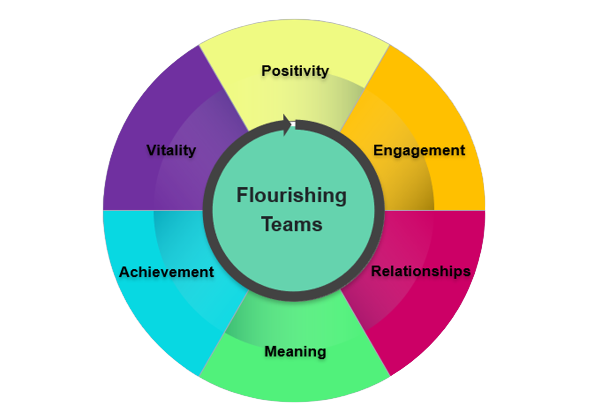
Cultivating Flourishing Teams: Positive Psychology as a Foundation for Organizational Wellbeing
In recent years, organizations have recognized the importance of employee wellbeing in improving productivity, engagement, and retention. Positive psychology or the science of flourishing focuses on the study of optimal human functioning and offers a framework that can be effectively used for enhancing wellbeing in organizations. Let’s explore the PERMA-V model of positive psychology and its role in creating a comprehensive wellbeing strategy for flourishing in organizations.
The PERMA model of positive psychology was developed by Martin Seligman, to conceptualize the main factors contributing to wellbeing. PERMA stands for Positivity, Engagement, Relationships, Meaning, and Achievement. In addition to these five pathways, we will also explore the Vitality pathway, which was later added to the model by Emiliya Zhivotovskaya and how they can all be applied to four dimensions of wellbeing.
Positivity is the first pathway in the PERMA-V model. It involves experiencing positive emotions such as joy, gratitude, and contentment. Organizations can foster positive emotions in employees by recognizing and rewarding their accomplishments, creating a positive work environment, and promoting work-life balance.
Engagement refers to the state of flow that people experience when they are completely absorbed in a task. This pathway involves using one’s strengths and skills to achieve a goal. Organizations can promote engagement by providing employees with challenging and meaningful work, allowing them to use their strengths and skills, and creating opportunities for growth and development.
Relationships are a crucial aspect of wellbeing. This pathway involves building and maintaining positive relationships with others. Organizations can foster positive relationships among employees by promoting a culture of collaboration and teamwork, encouraging communication and feedback, and creating opportunities for socializing and team building.
Meaning refers to the sense of purpose and fulfillment that people derive from their work and their lives. This pathway involves identifying one’s values and goals and aligning them with one’s work. Organizations can promote meaning in the workplace by providing employees with a sense of purpose, allowing them to contribute to something greater than themselves, and encouraging them to pursue their passions and interests.
Achievement involves accomplishing one’s goals and experiencing a sense of accomplishment and mastery. This pathway involves setting goals and working towards them, even in the face of obstacles. Organizations can promote achievement by setting clear goals and providing employees with the resources and support they need to achieve them.
Vitality involves taking care of one’s physical and emotional wellbeing, including getting enough sleep, exercise, and nutrition. Organizations can promote vitality by providing employees with access to resources such as wellness programs, health coaching, and mental health support.
There are multiple dimensions of human flourishing that organizations should consider when developing a wellbeing strategy. These dimensions include mental, emotional, physical, and spiritual wellbeing. Mental wellbeing involves having a positive growth mindset, reframing unhelpful thought patterns, and managing stress effectively. Emotional wellbeing involves being aware of and able to regulate one’s emotions, and experiencing emotions in a healthy manner. Physical wellbeing involves taking care of one’s physical health, including getting enough sleep, exercise, and nutrition. Spiritual wellbeing involves having a sense of purpose and meaning in one’s life.
By focusing on these dimensions of wellbeing and incorporating the PERMA-V model into their wellbeing strategy, organizations can create a comprehensive approach to promoting employee wellbeing using positive psychology. This approach can lead to a happier and healthier workforce, increased productivity, engagement, and retention, and ultimately contribute to the overall success and sustainability of the organization. As human resource professionals we play a crucial role in implementing these strategies and creating a culture of wellbeing within our organizations. Let’s prioritize employee wellbeing, so we can cultivate flourishing teams.
References
Seligman, M. E. (2012). Flourish: A visionary new understanding of happiness and well-being. Atria Paperback.

Your recipe for wellness is as unique as your DNA
Wellness has become such a buzz word today, even in the workplace. But what does wellness really mean and how can you incorporate it into your life?
A quick google search will find a plethora of information on wellness. So much information in fact, that it has become increasingly harder to understand what to do to improve one’s own wellness. Should you stop drinking coffee? Or should you ensure that you have at least one cup of coffee a day? If you sift through research, you can probably find papers to argue both contradictory points. So, even though the information is out there, the truth is still hard to find!
However, do not despair. Wellness is as unique as you are, and you get to determine your own magic recipe!
Wellness is divided into 8 dimensions: physical, emotional, spiritual, intellectual, environmental, financial, occupational, and social. Each represents a specific aspect of wellness, but each dimension will also affect and influence each other. And while there may be times when your financial wellness is suffering, your emotional wellness may be doing just fine. As well, there may also be times when it feels as though all your dimensions are struggling, making life difficult and challenging. Or conversely, all areas are functioning well, and you are feeling on top of the world!
To strengthen your wellness, it is important to understand the definition of each dimension and learn how to support and nurture all dimensions to live life to the fullest potential. In this article, we will examine four dimensions in depth. There will be small steps provided that can be easily added to your day to help nurture and grow these dimensions without having to dramatically change your day-to-day life.
The physical dimension is often the one the first comes to mind. In this dimension, focus is on caring for your body so you can live your life to the fullest. It does not mean spending hours in the gym or starving yourself to meet a certain weight. Move your body in a way that brings pleasure, eat well so your body gets the nutrients it needs to stay healthy and make sure you visit health professionals when you are not feeling well.
The emotional dimension is reflected in how well one understands and manages feelings. How well do you cope with stress or handle difficult situations? Are you a glass half full or half empty type of thinker.
There are many excellent studies that demonstrate that simple breathing exercises can help you manage your emotions and improve this dimension without taking a lot of time or requiring extensive training. One easy example is ‘box breathing. Breathe in for 4 counts, hold for 4 counts, breath out for 4 counts, and hold for 4 counts. Simply doing this 4 times can help your parasympathetic nervous system (the one that keeps us calmer) take over from our more reactive sympathetic nervous system. Try this next time you feel like you need a minute to regain composure!
When defining the spiritual dimension, purpose, beliefs, and the meaning of life are brought into focus. Find things that match your values. Organized religion may be a part of this dimension of wellness, but it is not required. Perhaps volunteer with a group who reflects the same values you do. Alternatively, simply ensure that you conduct your daily life staying true to what matters to you. Don’t be swayed by contradictory opinions or peer pressure. Trust in your own north star and follow it confidently.
Finally, intellectual wellness rounds out the four highlighted in this article. This dimension describes how to process information, one’s openness to new ideas and information. Stay curious. Make lifelong learning part of your DNA. Read books that others recommend that you may not have picked out yourself to hear a variety of viewpoints and help hone your critical thinking skills. Watch documentaries to see the world from someone else’s perspective. Practice making decisions, both large and small, to ensure you can confidently choose a course of action based on sound reasoning.
We all need to take time to take care of ourselves. Whether it’s a walk outside or curling up with a good book, we need to nurture all areas of our well-being. Hopefully, these few tips on the physical, emotional, spiritual, and intellectual dimension will help you do just that. Each small change you make can make a huge difference in your overall wellness!
OMHRA Member Spotlight
Erin Vries
Manager HR, Hastings County
OMHRA Member since 2019
 What are three adjectives your colleagues would use to describe you?
What are three adjectives your colleagues would use to describe you?
Supportive, Knowledgeable and Collaborative
If you had to state your three rules of engagement, what would they be?
- Speak with integrity.
- Never forget to be kind, even in tough conversations.
- Be willing to change your mind and I will remain just as willing.
Did you have an important early influencer in your life? Could you reflect on their role in shaping you and perhaps preparing you to be a resilient leader?
My father was a huge influence in my life. As a physician, he was a fixer. He healed with his heart and his hands. He instilled deep values for looking after others, and the need to be resilient when outcomes aren’t what one hopes for. He was also a lover of music and played the accordion and piano. Today, music is some of the best therapy I can use and enjoy to help with my anxiety and depression.
He was also a lover of his wife, kids and grandchildren. So much so he made sure that Christmas was the time of year that he invited all of his work colleagues and friends and their children to our home to celebrate one another. (picture a magical chaotic scene with a 23 ft Christmas tree and about 130 adults and children running around). He also had me dress up like an elf to deliver clementines piled high on a wheelchair to the staff throughout the hospital to thank them for all they do to support him every day (I’m 6’1”. Not exactly elf material). To this day, those family traditions warm our home, and my work life, and make it just a little easier to celebrate the holiday season without him.
Growing up his family didn’t have much and he lost his brother in a hunting accident when he was a teenager. So, it stands to reason why he wore gratitude and his heart on his sleeve. He liked to live in the moment. He also liked his solitude to decompress and read. Some of his learnings are best captured in some of his quotes: Family first; Pay your own way and a little bit more; and ‘If you’re going to do a job – do a good one’. To be honest, the last phrase is a comment that has the most impact as a resilient leader. It’s ok to fail. It’s ok to make a mistake, but by golly, whatever effort you work towards, give it your all. Take pride in yourself. Take pride in your work. For those who may struggle with mental health issues, sub par quality of work or losing pride in one’s appearance, is often the first sign of someone struggling. As a resilient leader we need to remember this when being a good steward to our own employees. Watch out for each other. Lift each other up. Help them out of the water and get safe and sound onboard.
What advice do you have for people just beginning their careers in human Resource Management?
Expect to feel like a rookie for several years. Don’t worry though. One day, everything just clicks. Listen to those more experienced, but don’t dare be afraid to suggest alternatives and seek input from others! Fresh eyes = fresh ideas. Human Resources is the art of weighing the options and defining the strategy. You got this.
What may surprise your colleagues about you?
I have Anxiety with panic disorder and PTSD. I’ve also had Lyme disease and my husband has a permanent spinal cord injury. Invisible illnesses are not easy to manage through when they are often vastly misunderstood, or not believed. We also have three brilliant girls including a set of twins and a black lab named Tank who helps support our mental health. Last but not least, I used to raise Peacocks and live in the arctic as child! (not at the same time. Ha!)
Do you have a hobby or non-work-related activity that you think enhances your effectiveness at work?
When I feel up to it, I make 3D custom theme cakes like the Scooby Doo mystery machine, or hockey jerseys! Those are getting less and less as my hands can’t handle the wear & tear of fondant too much anymore but I also like to craft once in a while. My specialty at the moment is Gnomes! Both activities require concentration and so it calms my overthinking brain.
What is your favourite quote?
“You’ve survived 100 percent of everything in your life so far, so there’s a pretty good chance that you’ll survive whatever is next.” Timber Hawkeye
What is your favourite work of fiction?
To be honest, I don’t read much in my free time. I should. I aspire to. Unfortunately, my overactive brain always seems to feed the squirrels inside and well, I can re-read a paragraph only so many times! I do like The Panther by Ogden Nash though!
What book on human resource management should every practitioner read?
Flight of the Buffalo – James A. Belasco

Looking After the Mental Health of Your Workplace
According to the World Heath Organization, “health” is a state of complete physical, mental, and social well being – it no longer refers only to the absence of disease or infirmity. A person’s work environment undoubtedly contributes to this state of health and well-being. But how can municipal employers create and support healthy workplaces when many disabilities, particularly mental health issues, are often invisible?
The reality is that identifying and then obtaining sufficient information to accommodate an employee’s mental health disability is an acute challenge for employers today. To meet workers’ mental health needs, as well as their employer’s legal duties relating to human rights and health and safety, managers must be prepared to start the conversation. This is the focus of this article.
How, where, and when should you ask someone who appears to have mental health issues if support and/or accommodation is needed?
The most appropriate time to have such a conversation is when an employee discloses a mental health disability or condition. However, there are many situations where they may not disclose for a variety of reasons (e.g., due to the stigma associated with mental health conditions). As a result, we must rely on outward signs of a mental illness, which inevitably begins with educating oneself on what signs to look for. This of course can be very difficult as managers are generally not medical experts.
Signs that may suggest a mental health condition include:
- a pattern of behavioural changes which may be thought “usual” in that individual (e.g. from happy to very sad or preoccupied; a dramatic deterioration in work performance; increased absenteeism; increased emotionality (difficulty controlling emotions or angry outbursts); difficulty concentrating, changes in personal hygiene or dress; or becoming withdrawn from activities).
- a particular behaviour happens once and seems very significantly “out of character” for the individual or out of touch with reality (e.g. speaking or yelling at no one in particular, slurred speech, seeming dazed and unaware of their surroundings, talk of feeling hopeless or of suicide).
Some of the above examples could be transitory and normal, or from specific stressors, but if they continue for some time, they may be cues of a mental illness, triggering the employer’s duty to inquire. In some cases, an acute incident could be a sufficient cue to trigger the duty to inquire.
If you conclude that an employee may have a mental illness, the next step is to start the conversation. Addressing the issue of an employee’s health is a delicate task. Confidentiality is essential, so it is best to meet with the employee in a quiet, private environment (out of the range of hearing of other employees). The meeting should also be carried out in a non-confrontational and gentle manner. Beware also of making assumptions.
It is important to remember when having these difficult conversations that some forms of mental illness can affect a person’s ability to assess their own situation and to appreciate the need to participate in accommodation efforts. Accordingly, an employee may flat out refuse to co-operate and deny that anything is the matter. This lack of awareness or cooperation by an employee, is not justification to halt the accommodation process, particularly if the employee’s behaviour poses a safety risk. Should such a situation arise, employers would be well advised to obtain legal advice.
What can employers do to make sure they receive relevant medical information?
One of the challenges that can sometimes hinder the accommodation process is not having enough information or relevant information from the employee’s physician. We’ve all seen vague medical notes or medical notes that seem to just put in writing an employee’s self-reported assessment, both of which are entirely unhelpful for the purpose of considering possible accommodations.
In an effort to obtain the relevant medical information, employers should consider writing a letter to the employee setting out clear questions for the employee’s physician, and instruct the employee to have their physician answer the questions.
What type of information can and should employers request in such a letter?
While it depends on the facts of each case, common questions include:
- The nature of the illness and how it manifests as a disability.
- Whether the disability is permanent or temporary and the prognosis.
- The restrictions or limitations that flow from the disability (what the employee can/cannot do specifically in relation to their responsibilities).
- The basis for the medical conclusions, including the examinations or tests performed.
- The treatment, including whether there are possible side effects of any medications which may impact the employee’s ability to perform their job.
What accommodations might help an employee with a mental health disability remain at work?
While the determination of what constitutes the most appropriate accommodation will depend on the employee’s unique characteristics, the following list provides examples of accommodations that may be appropriate for those with mental health disabilities:
- Flexibility in the start or end of working hours to accommodate effects of medication.
- Allowing the employee to take breaks more frequently.
- Modifying the employee’s job duties / reassigning minor tasks to other employees.
- Allowing an employee to re-locate to a quieter work space.
- Allowing an employee to work from home.
It is not always easy to have open and honest conversations about mental health, but as leaders and HR professionals we must increase awareness and begin the conversation.

Creating a Culture of Wellness: Maximizing Health and Wellness Resources for a Productive Workforce
As an HR professional, one of your primary responsibilities is to ensure that your employees have access to the necessary resources to maintain their health and well-being. This includes not only direct resources for employees, such as health insurance and wellness programs but also organizational initiatives aimed at promoting a culture of wellness within the workplace.
To promote wellness, it’s crucial to emphasize the ways in which benefits support individuals. Your group benefits provider or EFAP provider will have access to tools and resources that can complement an employers existing wellness program. By highlighting the benefits available, individuals can become aware of the resources that can aid in their overall wellbeing. Regular campaigns can help ensure that employees understand what is available to them in time of need.
Incorporating wellness programs into the workplace can be an effective way to encourage healthy behaviours and prevent chronic illnesses. Wellness programs with innovative programming can be a worthwhile investment if there is a budget. However, these programs can also be supported using existing resources from group benefit offerings such as the insurer or EFAP provider.
Advisors play a crucial role in tailoring their approach to meet the unique needs of each employer. For those with a budget, advisors can assist in sourcing programming that meets their requirements. However, for employers without a budget, advisors can utilize their creativity and explore the available offerings and resources that come at little or no additional cost, depending on the providers they use. It’s important to note that the value-added services provided by insurers differ, so employers have various options to choose from.
One effective way to integrate these supports seamlessly is by utilizing Employee and Family Assistance Programs (EFAPs) that can integrate with existing platforms your organization may already be using, such as Microsoft Teams. By making it easy for employees to access these resources, you can empower them to prioritize their wellness and seek the help they need when they need it.
Regardless of which EFAP provider or insurer your organization works with, it’s likely that they offer extensive health and wellness resources. These resources are continually being updated and expanded to meet the evolving needs of employees and provide comprehensive support. Taking advantage of these resources and encouraging employees to do the same, creates a culture of wellness that supports the long-term health and productivity of their workforce.
There are many different health and wellness resources that an EFAP provider or insurer may have access to. Some common examples include:
- Counselling and mental health support: Many EFAP providers and insurers offer confidential counselling services, including virtual counselling sessions and resources for mental health support.
- Health coaching: Some EFAP providers and insurers may offer health coaching programs that can help employees set and achieve health and wellness goals, such as improving nutrition or increasing physical activity.
- Financial wellness resources: EFAP providers and insurers may offer resources to help employees manage financial stress and improve their financial well-being, such as debt management tools or financial planning workshops.
To make the most of the health and wellness resources available through your EFAP provider or insurer, it’s essential to engage with your advisor and learn about the different offerings. Your advisor can help you understand the available resources and identify the ones that may be most beneficial for your organization. By collaborating with your advisor, you can take a targeted approach to wellness, focusing on the resources that are most likely to have a positive impact on the health and well-being of your employees. Be sure to ask questions, seek guidance, and stay up to date on new offerings and updates to existing resources to ensure you are making the most of the available supports.
As an advisor, it’s our responsibility to assist employers in exploring and implementing the many options that are readily available at a low or no additional cost. Our aim is to ensure that employees receive the best possible options while keeping the cost to a minimum.
New Words in 1963
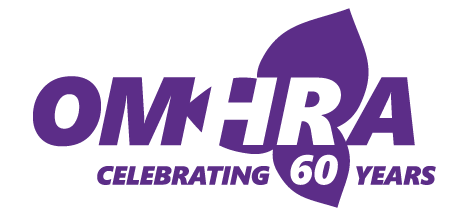
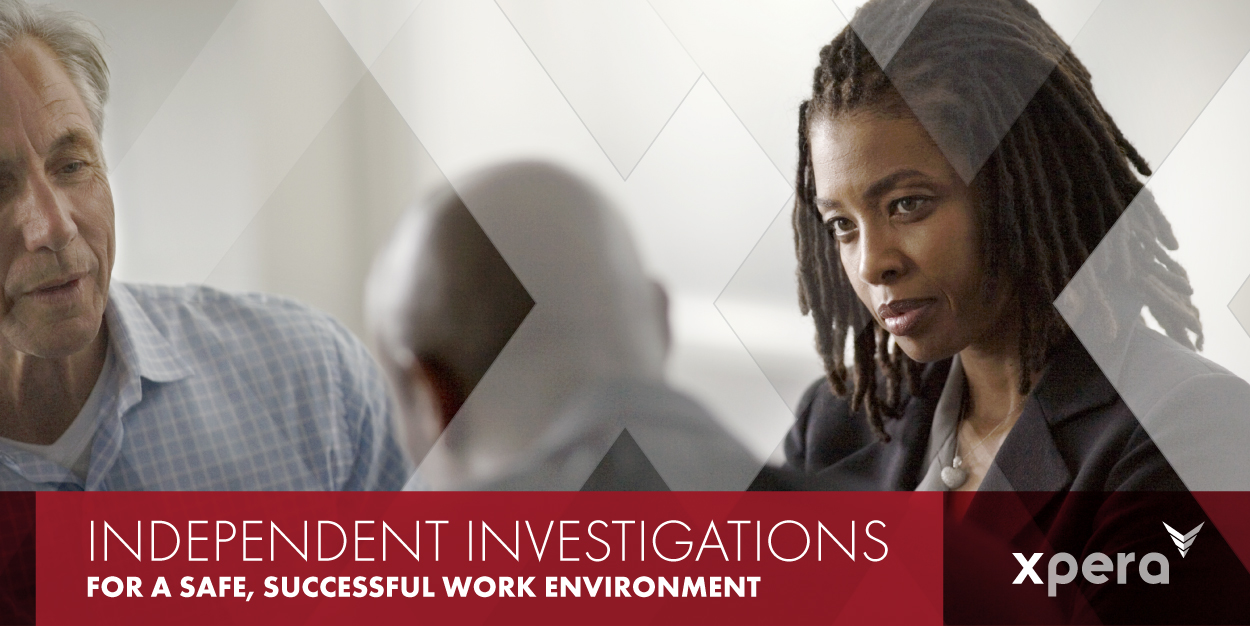
How an independent investigation can ensure a safe, successful work environment
Having a safe, inclusive work environment can have a direct impact on the success of a company or organization.
According to Forbes magazine, some of the positive impacts companies can experience include:
- Greater innovation and creativity.
- A broader range of skills and resources to draw from.
- Increased ability to attract the best talent.
- Wider breath of understanding of their customers.
- Boost in employee retention.
- Rise in productivity.
- Higher revenue growth.
But it’s not just companies and organizations that benefit from having a safe, inclusive environment. It can make a huge difference in the mindset and lives of employees as well.
In an article published by Great Place to Work, a global authority on workplace culture, when people feel they have a safe, inclusive place of employment, they are:
- 9.8 times more likely to look forward to going to work.
- 6.3 times more likely to have pride in their work.
- 5.4 times more likely to want to stay a long time at their company.
The negative impacts an unsafe, non-inclusive work environment can have
Anyone who has ever encountered a work environment that doesn’t feel safe or inclusive can tell you it affects how you feel when you’re on the job.
An international survey conducted by Boston Consulting Group (BCG) echoed this. Their research concluded that a safe and inclusive work environment is critical to an employee’s sense of well-being i.e., the state of being comfortable, healthy and happy. Here are some of the survey’s telling insights:
- Of the employees who reported they work in an inclusive culture, 81% said they are happy in their jobs—3X times more than those who don’t feel included.
- Workers who reported their work environment wasn’t safe or inclusive, are 4.6 times more likely to leave their current employer within six months.
- Worker unhappiness contributes to missed workdays and lower productivity.
As this survey underscores, if an organization has an unsafe, non-inclusive work environment, employee morale and well-being will suffer and company performance and success will do so too.
When should a claim of an unsafe or non-inclusive work environment be investigated?
A claim made to a supervisor regarding an unsafe or non-inclusive work environment may result after an employee has faced occurrences such as:
- Bullying or insulting language.
- Direct threats or harassment.
- Discrimination or retaliation.
- Violence.
- Human rights violations.
- Physically dangerous working conditions.
Based on the proven, negative impact an unsafe, non-inclusive work environment can have on an employee and a company, any claim should result in quick and immediate action and an investigation commenced.
Ensure a proper and thorough investigation: hire an independent firm
When a claim of an unsafe or non-inclusive work environment arises, it must be investigated objectively. To ensure this happens, many companies opt to employ an independent firm to investigate.
To preserve the objectivity of the investigation, an independent investigator will:
- Ensure procedural fairness.
- Conduct the investigation without bias.
- Follow all employer policies and procedures.
- Produce objective findings that stand up to any scrutiny and protect everyone’s interest.
- Gather all relevant information.
- Guard confidentiality and privacy, protecting against retaliation toward the complainant, respondent, witnesses and others.
- Provide a level of reassurance and comfort to stakeholders (versus lawyers or Human Resources) that will encourage greater information being shared.
- Provide a report that summarizes the documents and evidence reviewed, the interviews conducted and the findings, which will be presented in a fact-based manner.
The independent investigator’s report represents a high standard of detail, information and accuracy ensuring that it is legally defensible.
Once the report is complete a debriefing occurs between the investigator and the client representative who will receive the report. This provides an opportunity for the investigator to present the findings in person and answer any questions the client representative may have.
The findings you need to restore the well-being of your employees and company
Having a safe and inclusive work environment is something that has an immensely positive bearing on the well-being of employees and success of the company that employs them. When such an environment is compromised and a claim is brought to a supervisor, it’s imperative that the issue be investigated promptly and fairly. By engaging an independent firm to conduct the investigation, companies can ensure the claim will be explored objectively, the privacy of those involved and interviewed will be maintained, the findings will be legally defensible and a safe and inclusive work environment will be restored.

Living under the yellow light!
Make wellness, more than not sick!
Isn’t the hardest part of wellness is to stop thinking of it as not being sick?
We all know that red means stop, and green means go. Where we have the challenge is the yellow light. For some this means to slow down, and for others it means to speed up.
This exact same principle applies to most humans when it comes to our tug-of-war with wellness. When we feel the pressure or concerns start to creep in, a yellow light, some of us will want to slow down while others want to speed up.
The same principle applies to holidays, just like sitting at a red light when we are in a hurry, they take forever to get here and over in a flash.
What is really happening?
Perhaps the greatest challenge is to stop being reactive? When do we look after our physical health? When the doctor gives us the news that is not very good. When do many look after relationships? After they have progressed into the yellow light zone. Whether it is mental, emotional, spiritual, or moral health most of us wait until we see the yellow light. Hopefully we do not leave it until it is a red light.
What can be done?
The FIRST thing to understand is a little principle of temptation. Oscar Wilde once said, “I can reset anything except temptation”. The trigger moments most of us get tempted with are the times of ‘HALT’
- Hungry – not just physical things, but possessions, prestige, education, etc.
- Angry – we feel slighted, skipped over, treated unfairly, etc.
- Lonely – even in a crowd of a 1000 people
- Tired – but cannot sleep but ‘need’ to press on.
Check if you see any yellow lights warning that we need to HALT — we are getting drawn of our course.
The SECOND thing is look at wellness like a rechargeable battery principle. Basically, there are 3 ranges in a battery, just like traffic lights. When the battery is green, we are good to go. When the battery is red, we are stopped and not going anywhere. The danger zone is the yellow, as we can either start slowing down or try to speed up and press on.
Special note about Batteries? Most of us know that just because we put our cell phone on airplane mode does not mean it will recharge. The phone must get plugged in to be charged! Additionally, when a cell phone is in poor coverage, or in part of a building where signal is not good, it will keep searching for a signal and is ‘always on’. My family and I learned this the hard way!
There are some activities that will work the same way. They drain our battery quicker than anything. Sometimes we do not even notice how quickly this happens. The result is we have gone into the red without even being aware of it.
Unplugging from work will not recharge the battery, it is what we get plugged into that charges. Balance those activities which drain the battery with those that charge our battery is wellness in action
The THIRD thing
There needs to be a why behind keeping healthy and well. This is not about ethics, but our values. Those guiding principles of our behaviour that encapsulate our character.
They define what we would like people to say about us, what we are ‘in the dark’, supply meaning to our work and life.
It is not drawing a line in the sand- what a foolish statement! Every wind, heavy rain, or water erases the line. Values are the place where we “draw a line in the wet concrete”. The motivation for wellness must be there otherwise it tends to be ‘fits-and-starts’.
What is your why for wellness? How do you and I e-value-ate if we are not clear on our values?
The FINAL thing is to focus on more than just physical wellness or mental wellness.
Can you and I be mentally well if we are not well in our relationships, emotions or spiritually?
Wellness is more than just a physical theme, it is about all areas of being well – physical, emotional mental, spiritual, relational, and moral
As you start to enjoy the weather improving in warmth, think about your summer as the season between 2 traffic lights – it is a short enough season!
What will you do to charge your battery, so you finish well?

Managing Increasing Levels of Conflict In The Workplace
The Role of Compromise in Corporate Culture
Workplace conflict appears to be at an all-time high for many job sites across North America. Life In a post-pandemic world hasn’t become much easier for the average person, and as a result, HR managers are likely to experience a number of new challenges. The truth is that in this post-pandemic world, people simply have a low tolerance for insensitive comments, rudeness, and issues on the job site. While people have typically vented their frustrations on social media, conflict, in its many different shapes and forms, has flowed onto the job site.
Instances of workplace conflict have soared in 2023 and can turn a workforce’s attention away from productivity entirely. The hours spent on internal conflict can be staggering, and employers must rethink how their workplace culture can play a role in reducing workplace conflict.
Patience is a virtue, but for whatever reason, there continues to be far less of it on the job site.
Embracing Compromise as a Means For Managing Conflict
Employers look to their human resource managers to address issues and reshape a workplace’s culture with a renewed focus on productivity, rather than internal confrontation. Not every workplace conflict requires the attention of senior managers. Workers can be trained to embrace reasonable compromise that creates a corporate culture that has more patience and a deeper willingness to find solutions to their conflicts, without requiring the attention of managers.
Simple workshops that outline the benefits of compromise can be a great confrontation management tool for everyone, including executive leadership. Effective compromise considers everyone’s thoughts and perspectives and ensures that each employee is fairly heard and appreciated when confrontation does arise. When staff see the value of compromise, they can better navigate conflict and find solutions without the guidance of HR professionals.
Limit Setting and Confrontation Management
Conflict is handled differently by everyone, and certain personality types may be more willing to find reasonable compromise than others. HR managers are tasked with setting limits when it comes to workplace confrontation and will need to recognize when conflict has become unreasonable and intervention is required.
Setting limits on what is considered unprofessional conduct is a great start for any HR professional. Look to identify staff who are taking a competitive approach to compromise and pinpoint when proper mediation is required. HR can work to encourage clear and honest communication between staff that are in conflict, identify the core issue, and help propose solutions that consider everyone’s perspective. It’s also worth noting that, conflict doesn’t always exist as a heated debate or some sort of vocal expression, as many people address conflict without ever speaking up. As such, HR can work to facilitate healthy communication, rather than letting issues slowly brew without any immediate resolution. This sixth sense of knowing when to step in and when to allow staff to manage their own differences can work to create healthy and productive workforces.
HR has the difficult task of identifying the limit of what is considered conflict that can be resolved between staff, and what calls for discipline. Rude comments, harassment, and bullying call for immediate action, as employers have a responsibility to create a safe job site for everyone. As an employer’s duty of care responsibilities evolve, workplace culture initiatives can help address conflict before it ever calls for an HR intervention. Prempetively weave the concept of compromise into your corporate culture and exceptional productivity will follow.
Table of Contents
- 1
- 2
- 3
- 4
- 5
- 6
- 7
- 8
- 9

